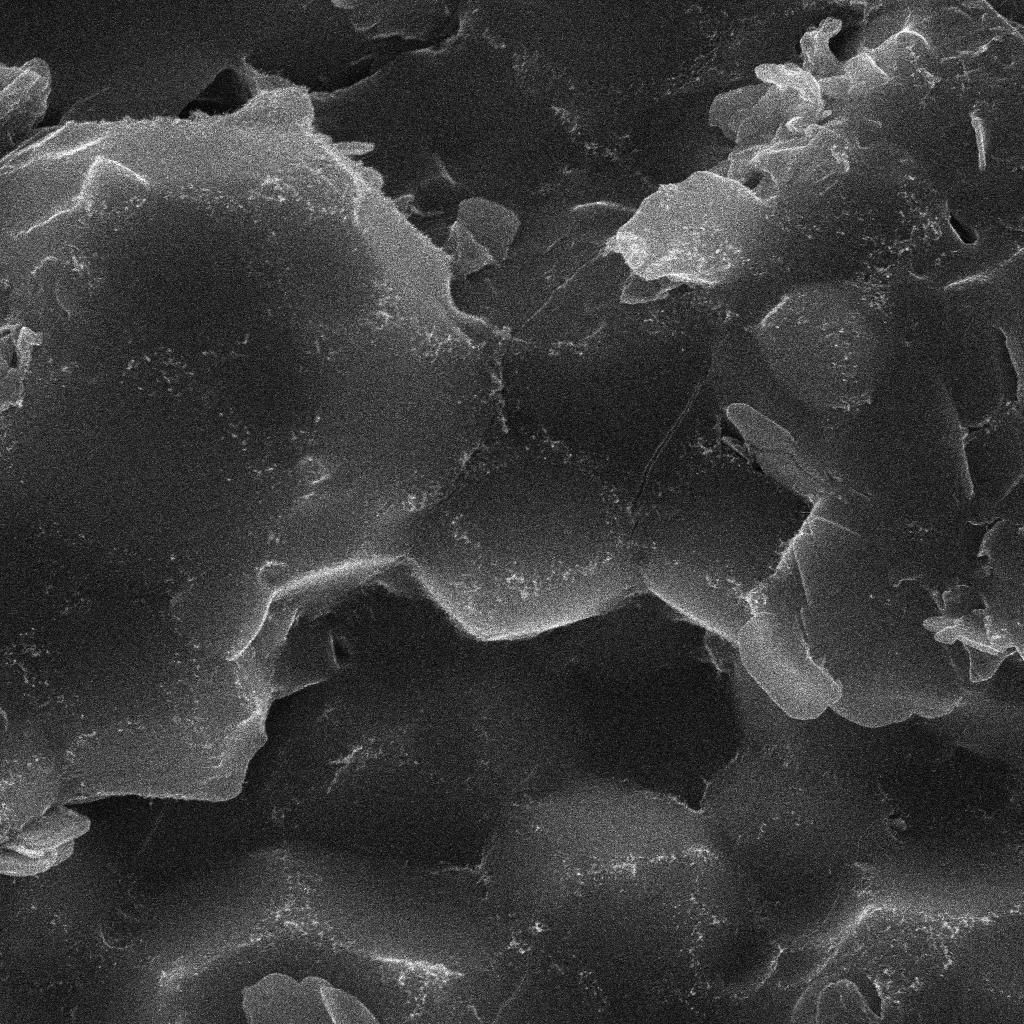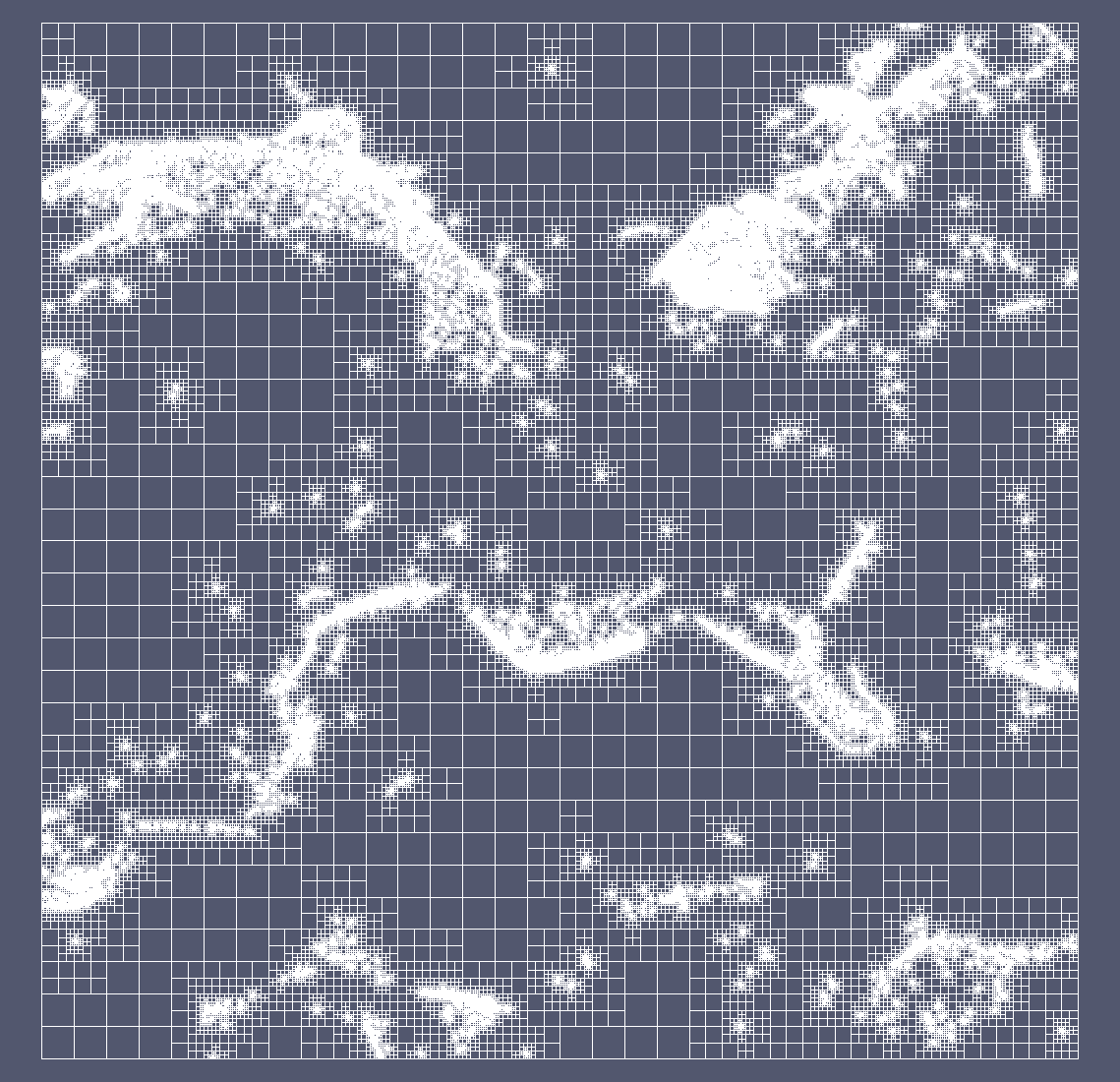Section:
Application Domains
New materials
Thanks to the multi-scale schemes that we develop, we can characterize new materials from constituents. As an example, consider the material presented in figure 3 left. It is a picture of a dry foam that is used as dielectric material. This micrography is taken at the scale of the dry bubbles, where on the surface of the bubble one can observe the carbon nanotubes as white filaments. The presence of nanotubes in the dry emulsion makes the electrical capacitance of this material significantly affected by its strain state by creating aligned dipoles at a larger scale compared to the size of the dielectric molecules. It is a typical multi-scale phenomenon in presence of widely varying physical properties. This material is used to generate micro currents when it undergoes vibrations. The schemes that we devise allow to model this multi-scale irregular material by a monolithic model (same equation in the whole domain), in this case a variable coefficient diffusion equation. In order to recover adequate accuracy, the numerical scheme is adapted near the interfaces between the different subdomains. The computational hierarchical mesh is directly derived by the micrography of the material (figure 3 right).
Figure
3. A micrography of an electrostrictive material is shown on the left: the bright regions visualize the carbon nanotubes. The hierarchical grid adapted to the nanotubes is shown on the right. The ratio between the largest and the smallest cell side is . Project developed in collaboration with the CRPP physics and chemistry lab of the CNRS in Bordeaux (Annie Colin, Philippe Poulin).
|
|




